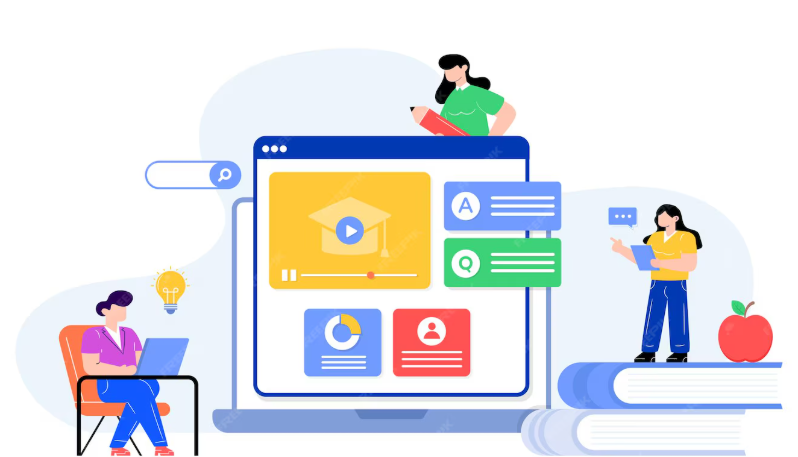Course creators can build inclusive online courses that engage students and improve their knowledge, involvement, and success by understanding and adapting different styles.
We recognize, as course creators in the digital world, that learners are not one-size-fits-all. We all have a variety of learning styles, and accommodating these particular preferences is critical for a successful online learning experience.
Visual Learners
Images, diagrams, charts, and other visual aids help visual learners assimilate information more efficiently. For those who are visual learners:
Incorporate Visual Content
Use pictures, infographics, and videos to illustrate difficult concepts and give specific instances.
Prioritize Readable Typography
A well-structured text using clear fonts, bullet points, headers, and subheadings will make the content easier to read.
Employ Color Coding
Use color to categorize information and create visual hierarchies to make it easier for visual learners to navigate stuff.
Engage with Interactive Diagrams
Use interactive images and technologies to help visually impaired learners explore concepts in a fun and entertaining way.
Auditory Learners
When they have the ability to listen, auditory learners flourish. For the benefit of auditory learners:
Offer Narrated Content
Provide spoken course material via audio recordings or podcasts to encourage participation from auditory learners.
Foster Discussion Forums
Encourage debates and discussions in your class since auditory learners benefit from hearing many points of view.
Present Podcast-Style Lectures
Deliver course material in podcast form, which is preferred by auditory learners who like to engage with the material in this way.
Provide Transcripts
Multimedia materials should provide transcripts so that auditory learners can follow along or study the information at their own pace.
Physical/Kinesthetic Learners
Learning environments that are engaging and hands-on are ideal for kinesthetic or physical learners. To get physical learners interested:
Incorporate Interactive Activities
Include practical assignments, role-playing, and hands-on activities that call for active participation.
Utilize Virtual Labs
Include virtual labs and experiments that allow physical learners to experiment and learn through practical experience, if applicable to your subject.
Highlight Practical Applications
To show the material's relevance to physical learners, emphasize its real-world applications.
Promote Collaborative Projects
Through cooperative group projects and activities, promote cooperation and problem-solving to engage physical learners.
The Role of Flexibility
Flexibility is crucial in light of the variety of learning styles. Create lessons that allow students to participate in the way that best suits their preferred learning style. Offering various material formats and assessment techniques is part of this.
Inclusive Online Learning
Coaches build a friendly and inclusive online learning environment for experts in their particular disciplines by incorporating visual, aural, and physical learning methods. Every learner, regardless of their preferred learning method, can succeed in the course because to this inclusive approach.
This fosters a lively and engaging online learning community in addition to supporting their personal progress. Every professional's educational journey in a virtual setting is enriched by the design for diversity.





